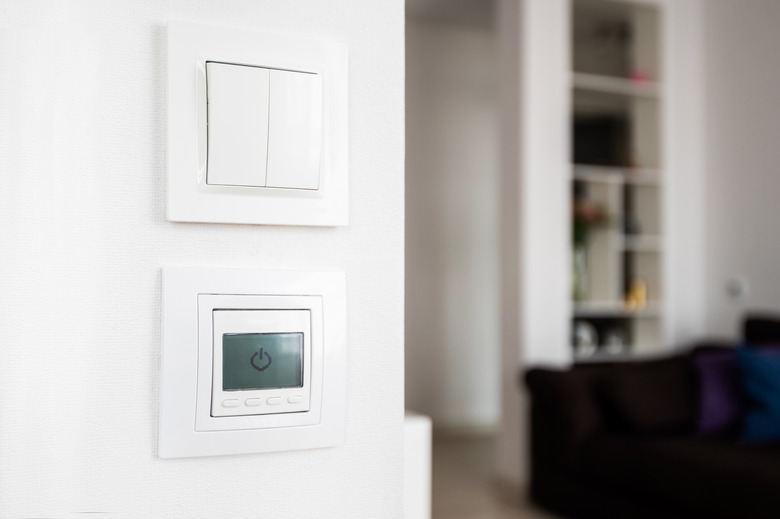Where To Install The Thermostat In A Two-Story House
We may receive a commission on purchases made from links.
A home thermostat helps keep your house at an even, comfortable temperature, whether the winter winds are howling or the summer sun is baking the outdoors. But if you live in a two-story house and have only one thermostat, correct placement of the thermostat is particularly important.
Correct Thermostat Location
Correct Thermostat Location
You want to place the thermostat where it's least likely to experience temperature change. That means you should place the thermostat away from any windows where it's likely to get heat from the sun or drafts. You also want to keep the thermostat away from any vents because that could fool the thermostat into thinking the house is cooler than it actually is.
In a two-story house, warm air rises to the second floor and makes the upstairs feel warmer than the ground floor. This happens whether it's winter or summer. Placing your thermostat in a middle room of your house, like a hallway on the ground floor, will give you the most accurate reading of your house's actual temperature without being influenced by other factors.
If you have two thermostats, you can install each one in interior rooms of the house and set the temperatures accordingly. However, when you have one ac unit for two-story home that controls the temperature for the entire house, placing it at least 52 inches high on a ground floor wall will help keep the entire house more comfortable.
Places to Avoid
Places to Avoid
There are lots of places in your house where you don't want your home thermostat to be. If you have a single HVAC unit controlling the temperature for the entire house, you want to make sure your thermostat helps your unit run as efficiently as possible, and that means avoiding areas that get too warm or too cold.
Placing your thermostat near windows or doors will expose it to drafts. Even the most well-insulated window will still let in a bit of a draft, so keep the thermostat away from these openings. The same goes for the exterior walls of the house. Vents can cause significant changes in temperature as warm or cool air funnels into the room, so don't place the thermostat near a vent.
You also want to avoid bathrooms and kitchens where refrigerators, stoves, and other appliances can significantly warm a room, making the heat run less and the air conditioning run more. Also, avoid putting a thermostat near TV sets or lighting, both of which can generate heat.
Ideal Thermostat Location
Ideal Thermostat Location
A home thermostat is sensitive to the air temperature that surrounds it. It then compares that temperature to the setting on the thermostat. When the temperature is too hot or cold, it signals to your HVAC system or furnace that it's time to cycle on.
While you don't want the thermostat location to be near a vent, it's OK to place it near a return intake. Warm or cool air isn't released from these, so the temperature won't be affected.
Place your thermostat about 52 to 60 inches high, which will allow it to sense the temperature you'll feel when sitting on furniture or standing in your home. Some heating experts suggest that placing it in a centrally located room provides a more realistic setting than a hallway, but that may depend on the layout of your home.
